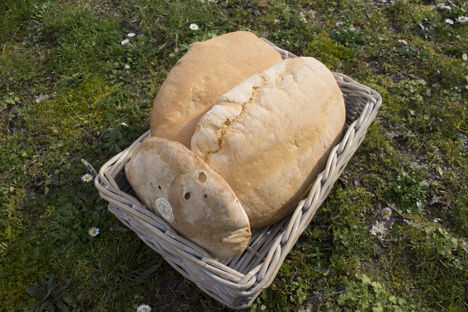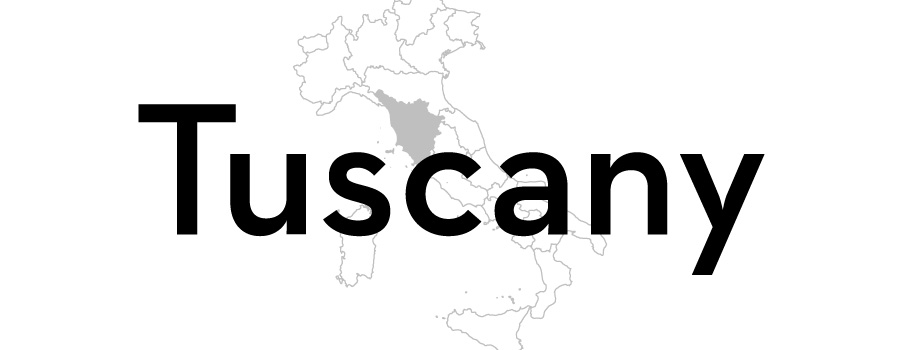
Pane Sciocco: Tuscany's favourite bread
Luca Marchiori looks at the history of Tuscany's famous salt-free bread and some of the dishes that make the most of its unique flavour.
View more from this series:
Italy's regional cuisineThe sight of huge, crusty loaves of bread, fresh from a wood-fired oven, is one you find all over Tuscany. The locals love their bread, made in one kilogram batches which look like giant turtle shells, known as pane sciocco. At markets you often find attractive artisan versions which are part of the current international trend for sourdough.
But Tuscan bread is full of surprises. Biting into the spongy crumb, wrapped in an enticing crust, the expected, familiar flavour of bread doesn’t develop in your mouth. Instead, you get a cool creaminess with a subtle note of yeast; sweet but with something missing. And then it registers – salt. The bread has no salt.
The second surprise is the name. Pane sciocco translates as ‘stupid bread’, which sounds rather derogatory. Perhaps this is a reference to the fact that without salt it tends to go hard quite quickly and will only last for a day or so. However, whatever the name might imply, Tuscans are very attached to their bread and have resisted putting salt in it for centuries, even though many non-Tuscans consider it not to their taste.
We know that salt-free bread has been eaten in Tuscany for well over 800 years. In the early 1300s, the Florentine poet Dante Alighieri was exiled from the Duchy of Tuscany to the Veneto where he wrote his masterpiece the Divine Comedy. In one scene, he imagines being warned of his exile by his great-great-grandfather, whom he meets in heaven. In an obvious longing for the tastes of home, he hears his ancestor say, ‘You’ll soon find out how salty the bread tastes abroad!’
As with everything in Italy, there’s a story as to why the Tuscans stopped putting salt in their bread, and there are at least three slightly different versions.
Three stories
Version one: According to the Florentines, in the twelfth century rivalry with neighbouring Pisa lead to the Pisans placing punitive taxes on salt entering the mouth of the river Arno and sailing up to Florence. The Pisans controlled the river by hanging chains across it, but the cool Florentines simply stopped using salt in their bread to call the Pisans’ bluff.
Version two: According to the Pisans, the medieval Florentines were obsessed with taxes, imposing duty on everything that moved. This lead to huge hikes on daily essentials including salt, and the local people responded by making bread without it.
Version three: Tuscan cured meats, salamis, and cheeses are naturally quite salty, and so they began to make bread without salt to compensate.
I like to believe the first one, since the chains are still proudly displayed in Pisa, although they were probably used to close off the main port and not the whole river. The third one also has a ring of truth to it, but I think it was probably the flavours of the meats and cheese that developed to compensate for the bread. The second version is probably the correct one.
Over the centuries pane sciocco has become an essential part of Tuscan cuisine, often being used as a major ingredient of dishes. When you understand that it’s not meant to be eaten on its own but as part of other recipes, you understand why it’s still made and why Tuscans love it so. Look through any traditional Tuscan cookbook and it’s everywhere, playing a major part in delicious dishes that would not be the same without it. The list of recipes requiring it is too long to mention, but here are five of the most famous, all of them Tuscan cookery classics. They should be on anyone’s culinary bucket list.
The dishes
Crostini are seen as celebration food in Tuscany and are present at every festival, wedding, birthday, or restaurant meal, served as an antipasto. They consist of slices of pane sciocco, cut in half, painted with olive oil and then toasted. A wide variety of toppings are then added. Amongst the most traditional are crostini neri, topped with a pate of chicken livers and hearts, crostini rossi, topped with tomato and crostini al salsa tartufata, topped with a creamy truffle-flavoured sauce. There are many other varieties and chefs will often invent their own signature crostini.
Panzanella is one of the most misunderstood of Tuscan dishes. Often interpreted outside Tuscany as a salad with large toasted croutons, the reality could not be more different. It’s made by soaking slices of stale pane sciocco in water, and then squeezing the liquid out with your hands. You are left with a couscous-like creation into which you then mix chopped onion, tomato and cucumber before dressing it with a vinaigrette. The result is an extraordinarily delicate salad, with the bread taking on a light, fluffy texture. There’s evidence that bread salads of this kind were eaten in Roman times, only obviously without the tomato.
This is the first and simplest of three Tuscan bread soups. Having prepared a basic tomato soup with oil and basil, you place slices of pane sciocco in the bottom of the serving bowls. You then cover the bread with soup, wait a few minutes and stir. As if by magic, the bread – which has absorbed most of the liquid – dissolves into a tomato mush (which is what the name means). Drizzle with olive oil and add some chopped parsley and you’ve got the ultimate Tuscan comfort food.
There are as many recipes for acquacotta as there are towns and villages in Tuscany. But the name, which means ‘cooked water’, suggests they all consist of a broth which is then poured over bread and prepared in the same way as pappa al pomodoro. In the province of Arezzo, acquacotta is made with a porcini mushroom broth thickened with eggs and grated pecorino cheese. The result is pure umami with hints of the forest floor.
This final dish is the king of Tuscan bread soups, and takes at least twenty-four hours to make. The reason is that it’s not really a dish in it’s own right, but a reheated version of another bread soup. This is where the name comes from: ribollita means ‘re-boiled’. The base soup contains carrots, onion, celery, beets, cavolo nero, borlotti beans and plenty of bread. This is allowed to cool so the flavours can develop and then reheated while being stirred vigorously with plenty of olive oil.



